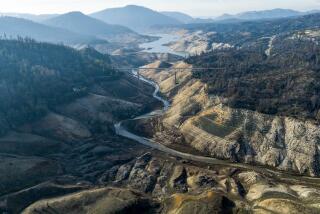Weather
- Share via
Forecasters say this winter’s El Nino just may be the climate event of the century. If it is, it will show how a weather change in one part of the world can affect climates in other places. El Nino is a change in the ocean-atmosphere system of the tropical Pacific, but its impact can be global. What will it mean for Southern California this year? Probably lots of rain. To learn more about weather, use the direct links on The Times’ Launch Point Web site. https://www.latimes.com/launchpoint/
LEVEL 1
Weather Wizards: A group of fifth-grade students designed an introduction to weather instruments, maps and clouds. Print out your own chart for recording and predicting the weather.
https://pen1.pen.k12.va.us:80/Anthology/ Div/Albemarle/Schools/Crozet/
ClassPages/Woodward/weather/weatherhome.html
The National Severe Storms Laboratory’s Weather Room: Find a list of the weather symbols used by meteorologists. Discover interesting facts about tornadoes, hurricanes and lightning. Includes information about careers in weather forecasting. https://www.nssl.uoknor.edu/edu/
Hurricane: Storm Science: Can airplanes fly into hurricanes? Find out the answer to that question and many more at this site. If you have experienced a natural disaster, you can tell your story in the “Healing Quilt” section. https://www.miamisci.org/hurricane/
LEVEL 2
Franklin’s Forecast: Discover how to be “weatherwise” at this site. Learn how to build a weather station, check current weather and read radar images. https://www.fi.edu/weather/
Dan’s Wild Wild Weather Page: An interactive site where you can learn about all aspects of weather and its terminology. https://www.whnt19.com/kidwx/
WeatherNet: Access weather forecasts and maps for your local area. Go to the “Weather Cams” link to view photos of locations across the United States, including Venice Beach, Chicago and New York. https://cirrus.sprl.umich.edu/wxnet/
LEVEL 3
The Online Guides--Meteorology: This extensive site includes detailed articles about the global effects of El Nino, the development of hurricanes and weather forecasting tips. Features colorful diagrams, animations, audio and video to introduce meteorology concepts. https://ww2010.atmos.uiuc.edu/(Gh)/guides/mtr/home.rxml
The Weather Channel: Find out forecasts for your favorite U.S. and international cities. View maps that show whether the weather is affecting travel conditions or causing health and allergy alerts. https://www.weather.com
El Nino Theme Page: A comprehensive site for El Nino information and data. Learn about the worldwide consequences of El Nino through illustrations, interactive diagrams and links to articles. https://www.pmel.noaa.gov/toga-tao/el-nino/
Launch Point is produced by the UC Irvine department of education, which reviews each site for appropriateness and quality. Even so, parents should supervise their children’s use of the Internet. This week’s column was designed by Ronni Rowland with contributions from Bernadette Zamora.
EXPLORER’S QUEST
The answer to this Internet quiz can be found in the sites at right.
QUESTION:
If thunder and lightning occur at the same time, why do we see lightning first and hear thunder later?
Clue: Use Dan’s Wild Wild Weather Page
Tell Us What You Want To Know
Got a paper or project coming up? Just curious about something? Send us a topic, and we’ll consider it for a future Launch Point column. Write to us at The Times Orange County, 1375 Sunflower Ave., Costa Mesa, CA 92626. E-mail us at educ@latimes.com or leave a phone message at (714) 966-4550.
Answer to last week’s Quest:
In Columbus’ first voyage, the ships traveled about 150 miles a day.






